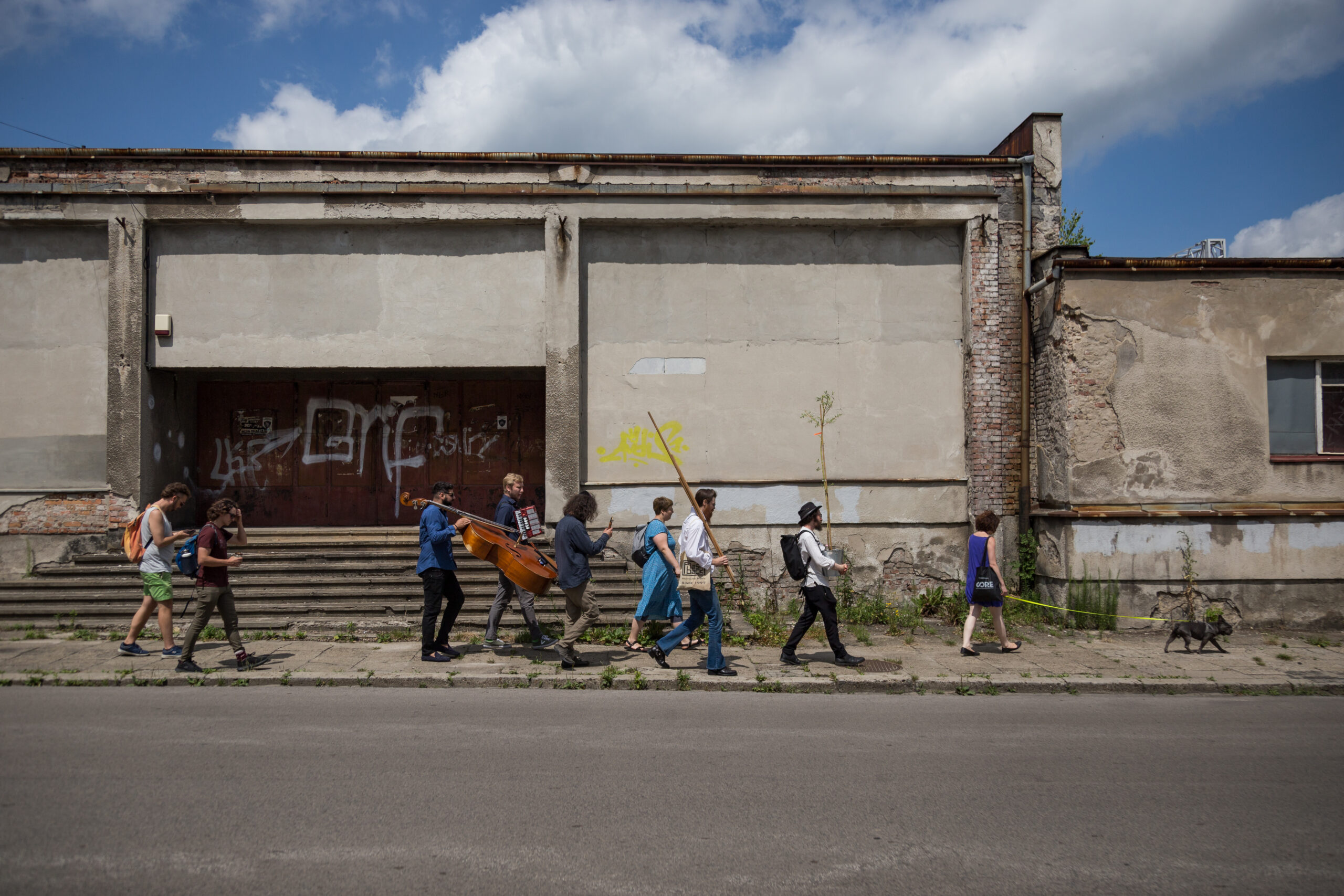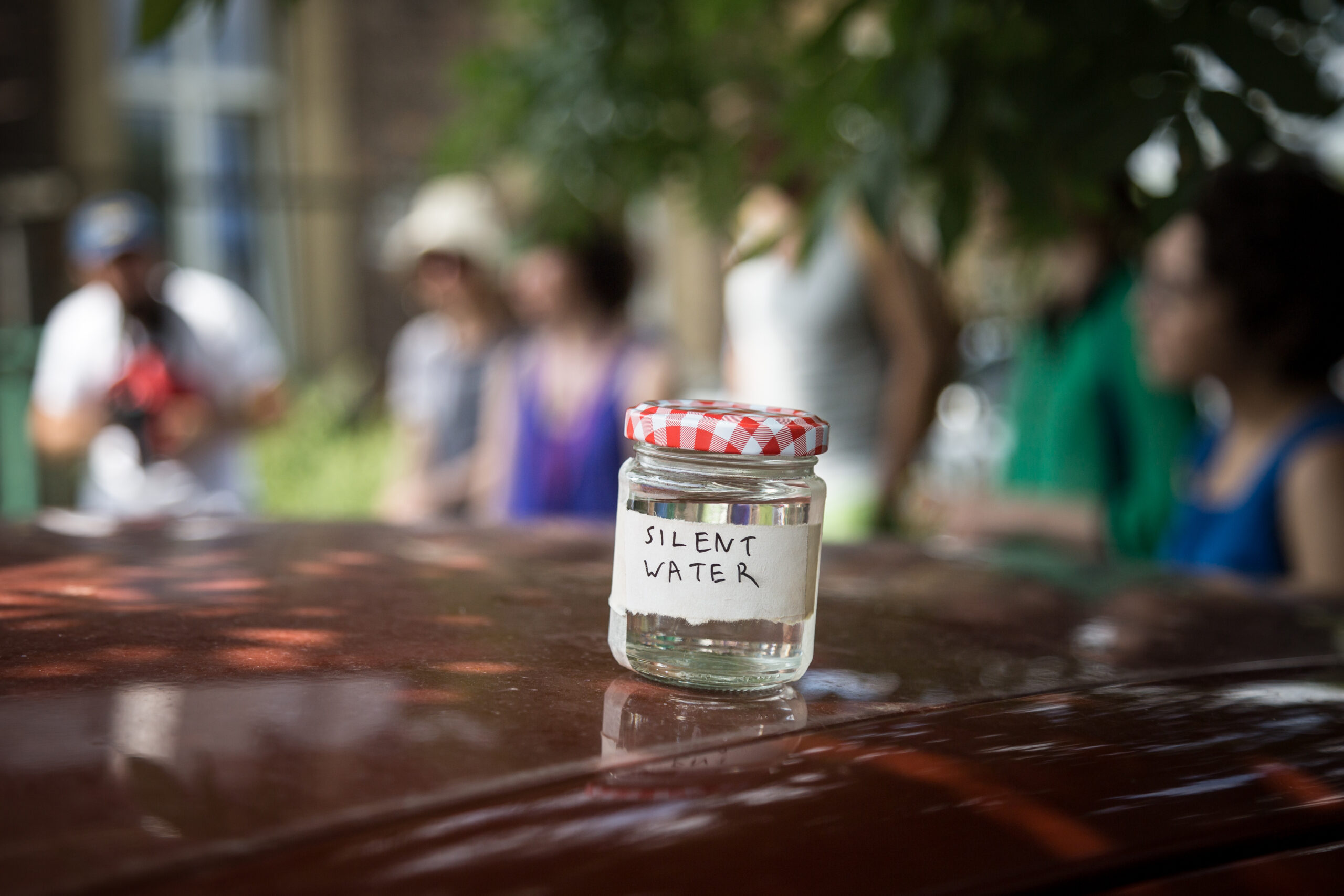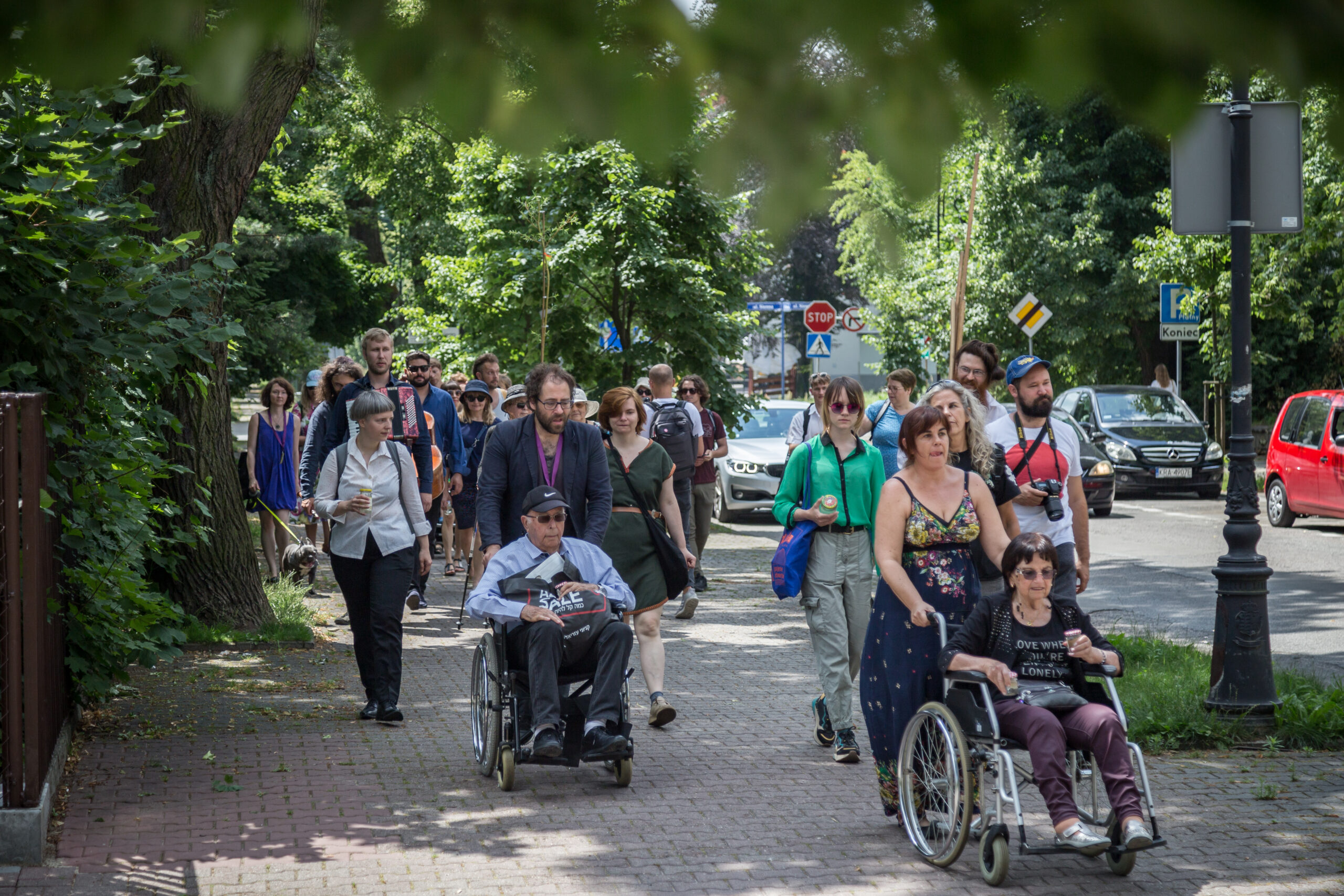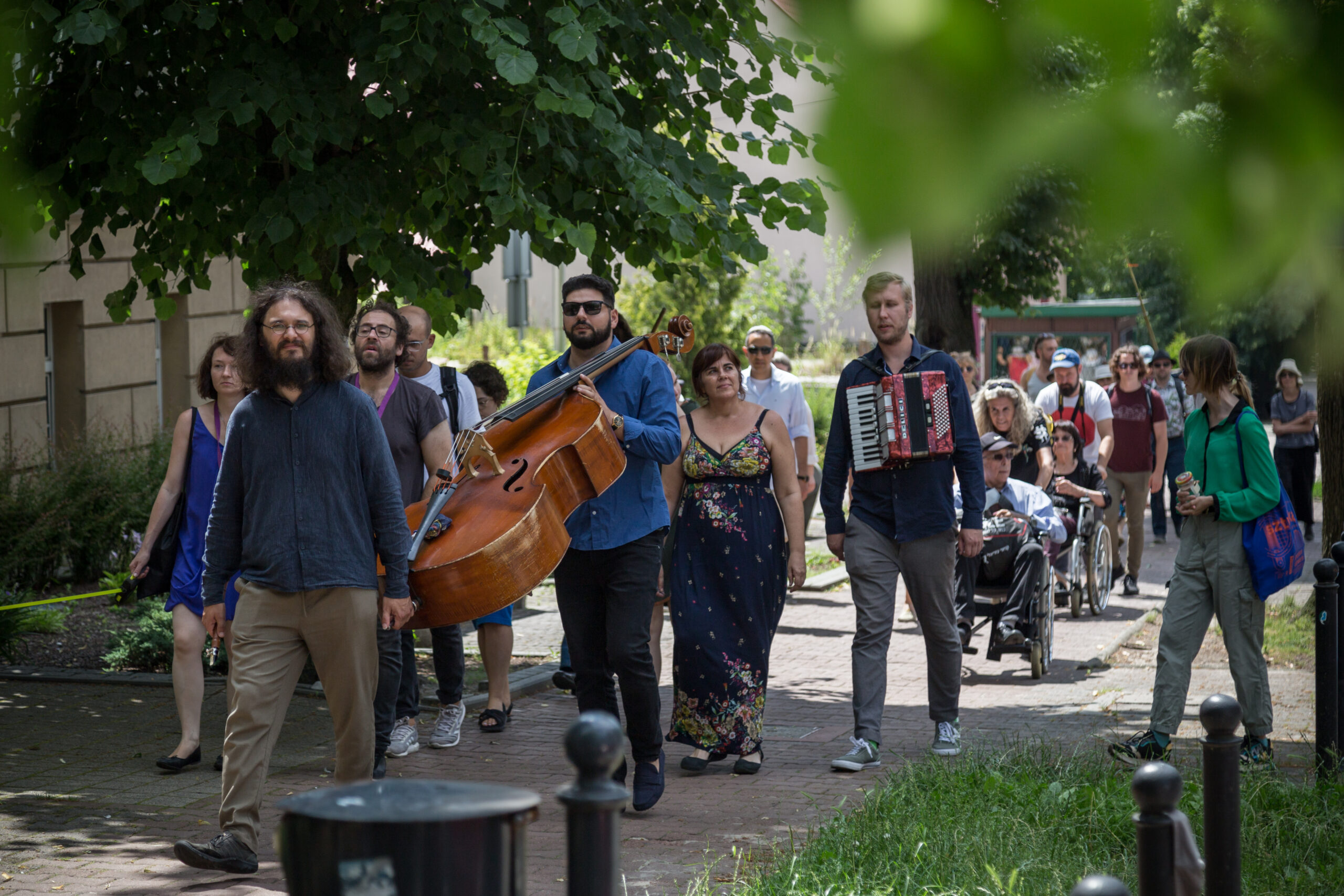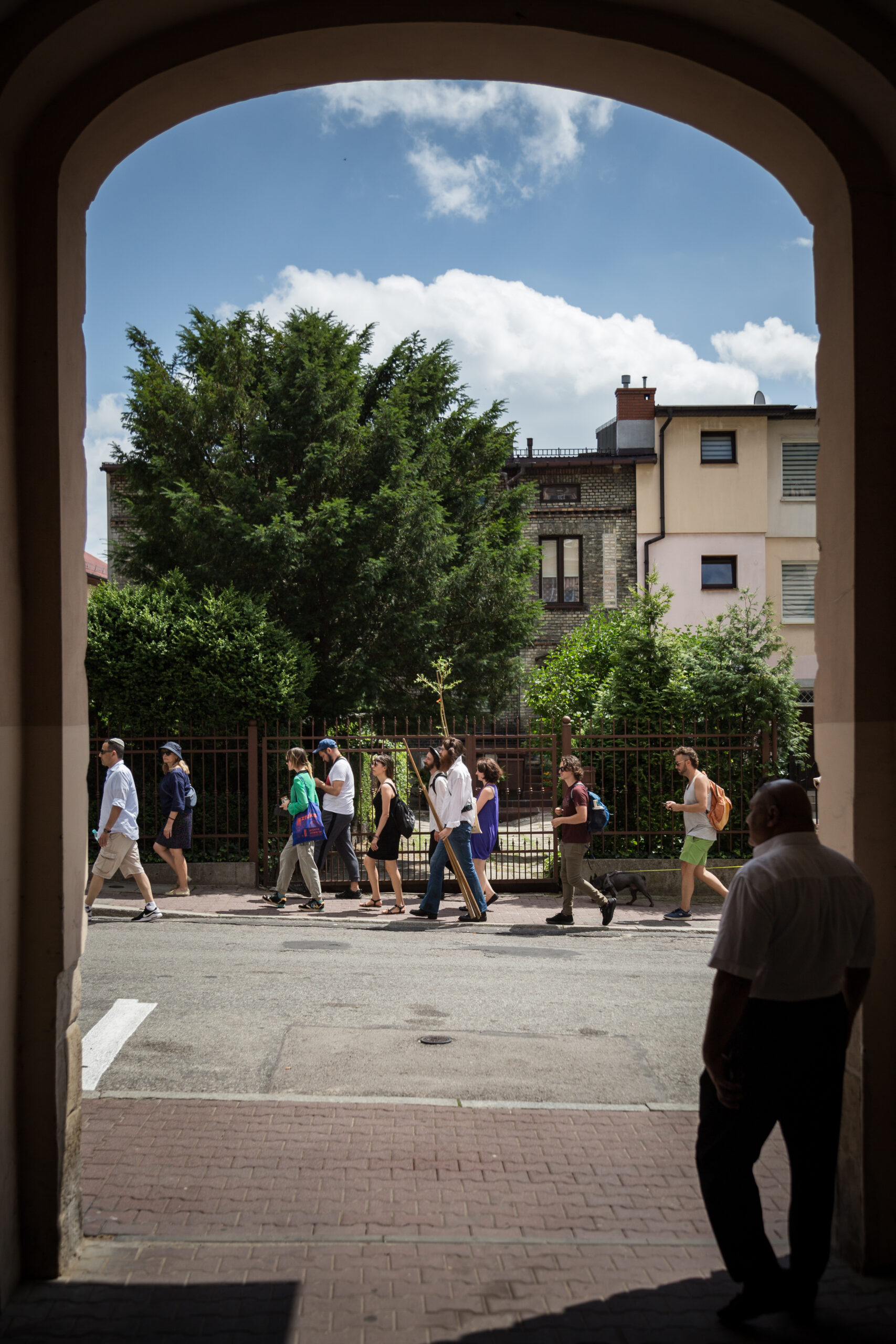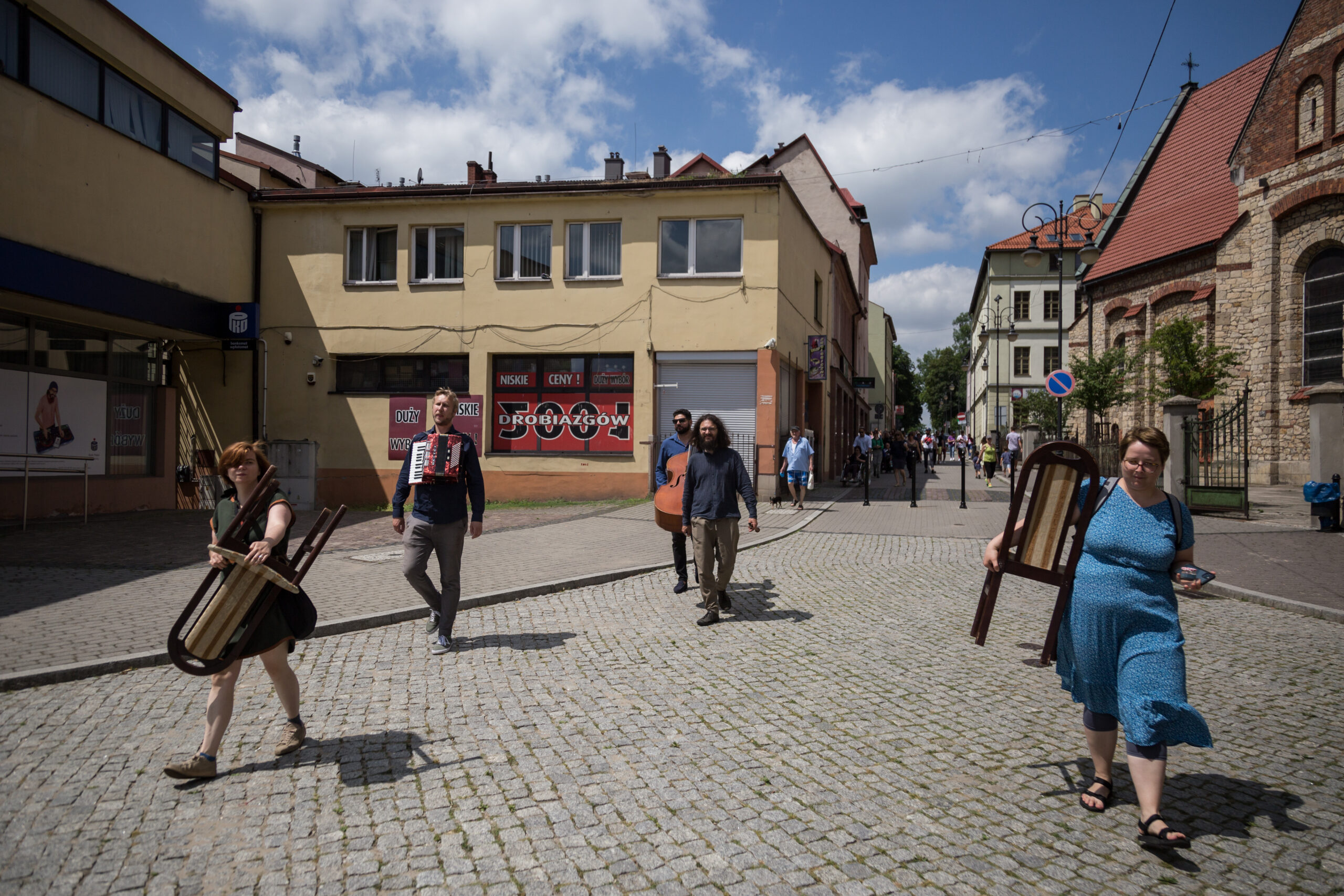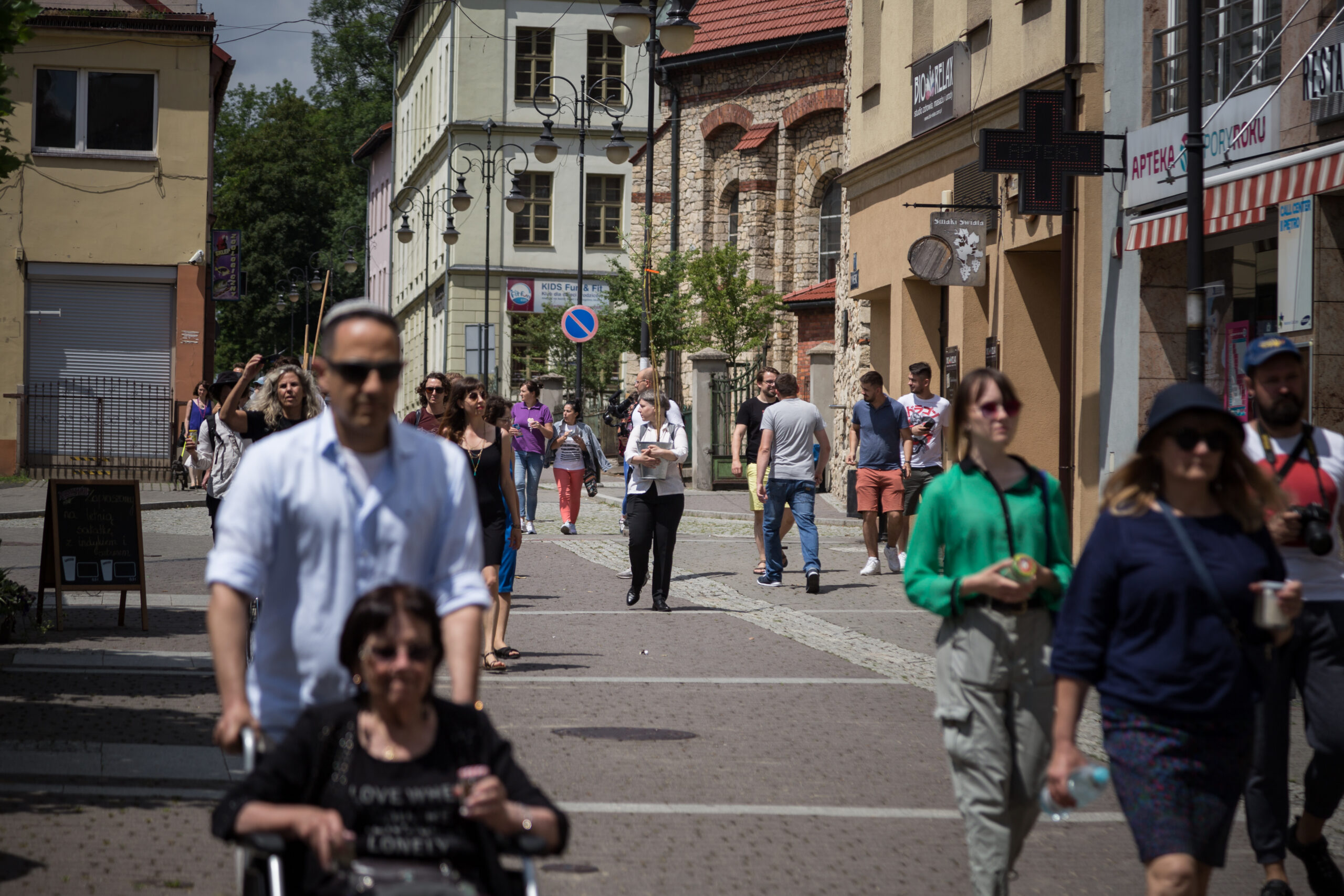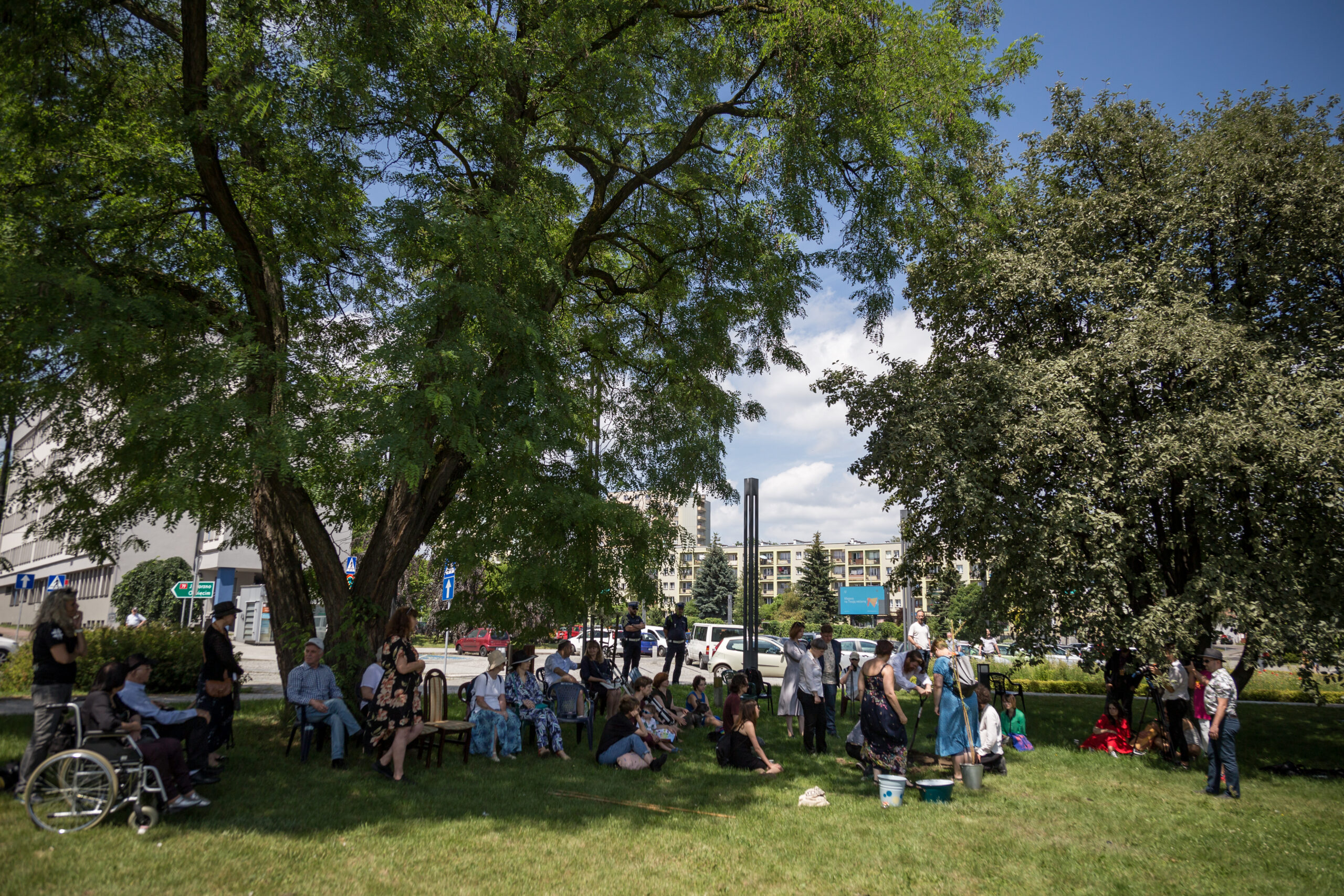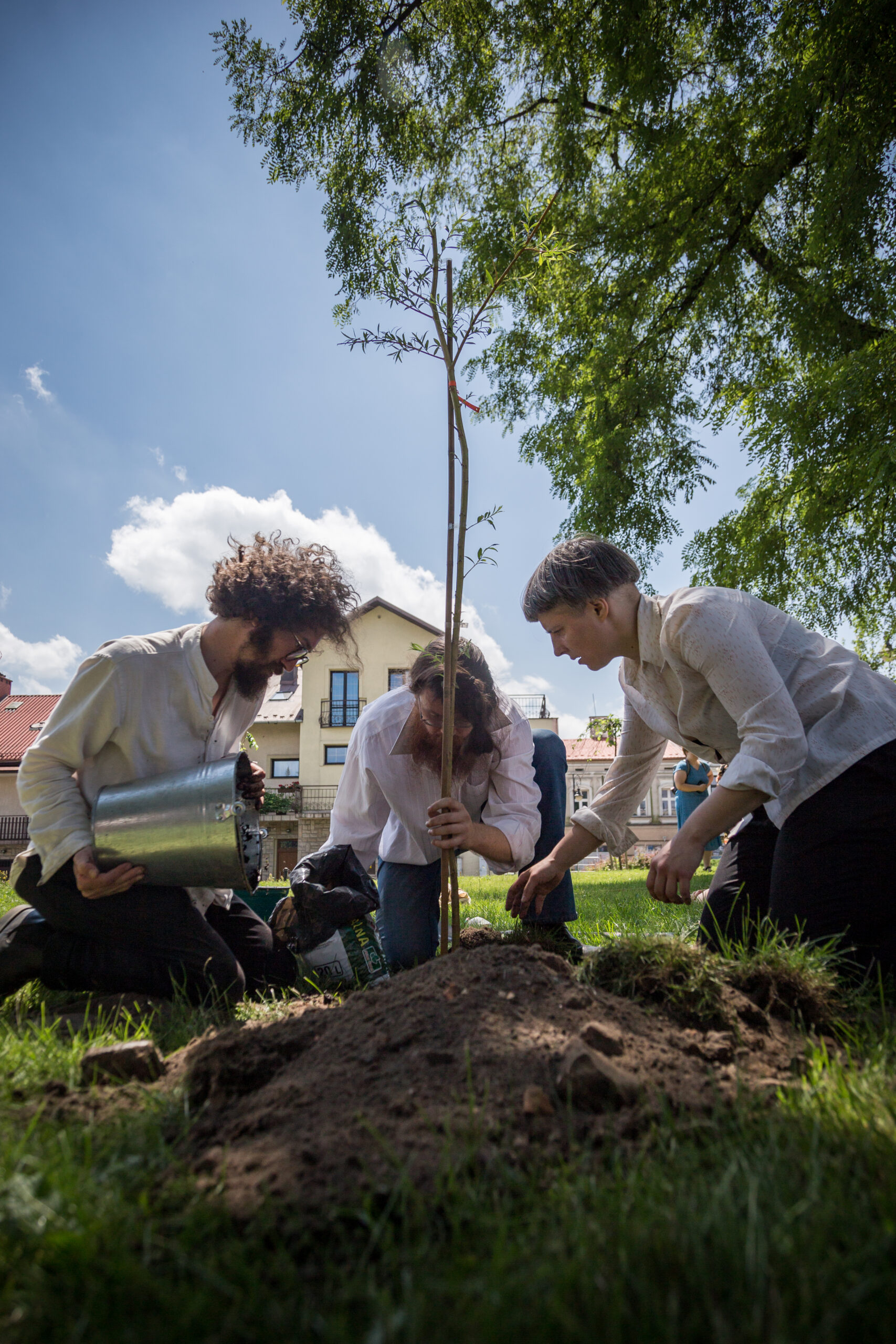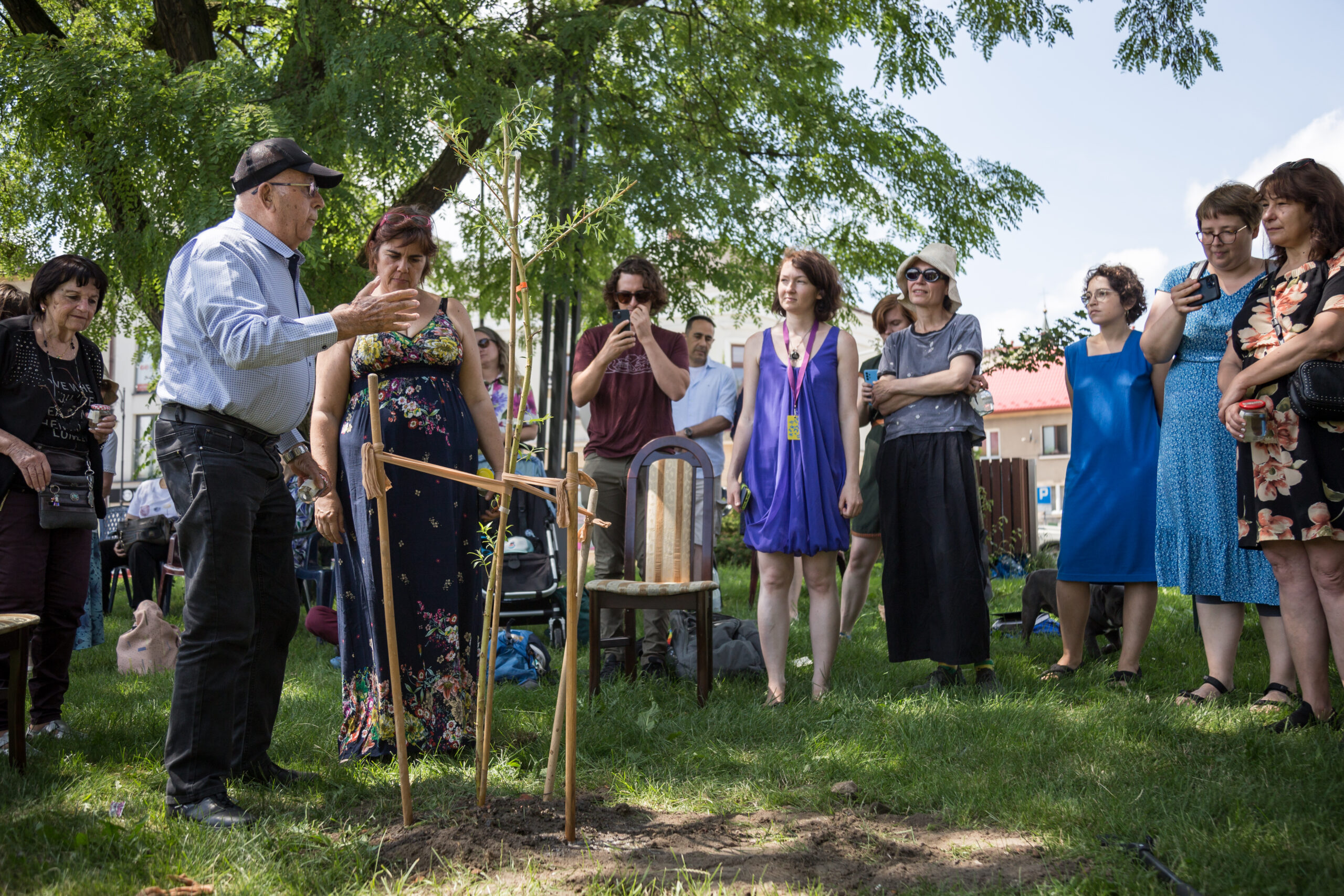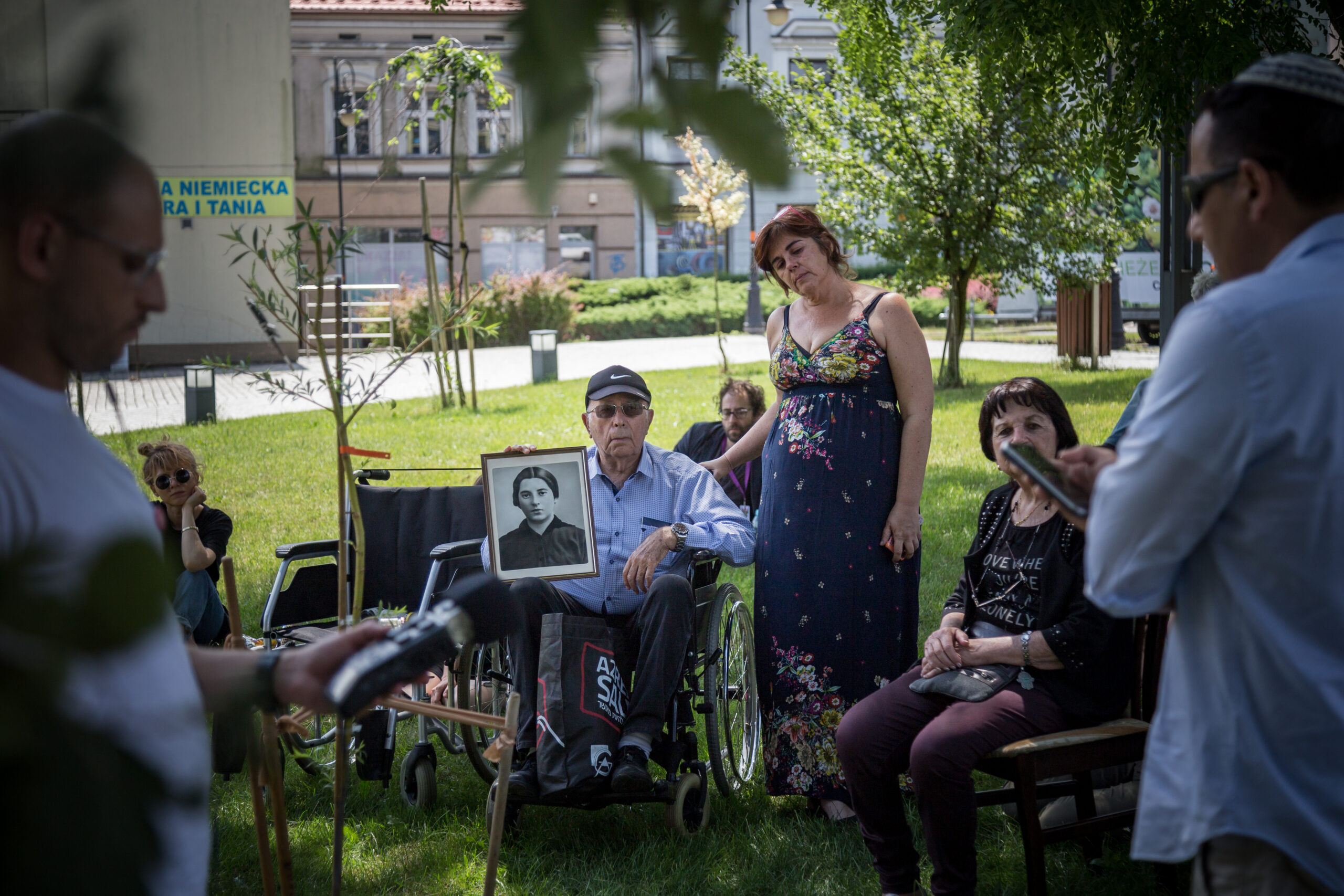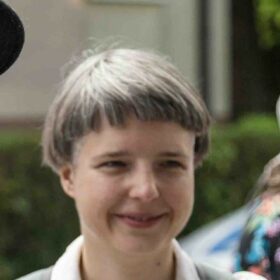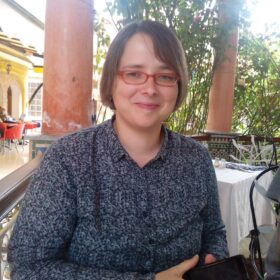The joint planting of a willow in Chrzanów as part of an artistic intervention by two local artists, the sisters Marta and Katarzyna Sala and Robert Yerachmiel Sniderman from Philadelphia.
Only July 3rd at 11:00, the artists led a silent collective walk from the Chrzanów train station (where the Jewish population of the city was deported to Auschwitz-Birkenau), through the market square (where the people were divided into two groups: one to be deported and the other to return to Esther’s Square in the ghetto), ending in the former Esther’s Square. Able-bodied participants alternated carrying the white willow sapling and everyone each carried a jar of silent water. Once at the square, the collective planted the sapling with the silent water, followed by live music rooted in the city’s cantorial tradition, spoken words, and coffee and plum cake, in this way activating then kind of relations the square nourished for centuries.
Among the Slavs, the term “silent water” was used to refer to water that was collected from a flowing source (i.e., living water) after dusk or at dawn and brought home in silence. Living water combined the features and symbols of fertility and death. As it flowed from the depths of the earth, cold and silent as a grave, and was able to kill people, it was imagined to carry with it the magical qualities of the afterlife. In order not to lose these qualities and not spoil the water, it was necessary to refrain from modifying it in any way. Therefore, silent water had to be collected after dark and it was required to maintain absolute silence until the beginning of the healing ritual. In Yiddish, it was known as Shtilvaser, shtilshvaygende vaser, and this term was translated into Hebrew as Mayim Shetukim, “silent water.” /Dr. Marek Tuszewicki/
For a more detailed account and reflection on the happening, see Robert Yerachmiel Sniderman’s essay, “A Willow (Grave) That Knows a Felled Willow (Mourner) That Knew an Eradicated Square (Woman)” in The Hopkins Review, Traversals: a folio on walking pod redakcją Christine Hume i Anny Marii Hong (2023).
